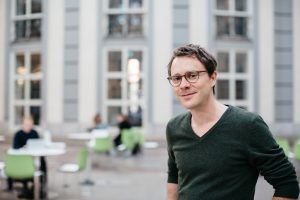Looking ahead: time preferences, saving behavior and retirement
“Working on a reliable model to predict the impact of policy changes for different groups”
How do households make life cycle decisions, what is the impact of different risks during the lifetime and how does this affect the way people respond to policy changes? All these factors come together in the economic life cycle model that Max Groneck (RUG) and others are working on. Max presented their progress during the International Pension Workshop 2021. “By combining economic theory with administrative data, we can predict what the impact of policy changes will be on different groups of people and what this will do with, for example, inequality in society. Now and in the long term. ”

“During their lives, people are exposed to all kinds of risks. When young, they may lose their job or get divorced. Older people may develop health problems that entail additional costs. Economists try to map out the consequences of these life events on, for example, labor participation at a higher age and the saving behavior of different groups of people. The aim is to understand how people make decisions over their life cycle and to predict the impact of policy reforms on inequality in society or on general labor participation. We use dynamic life cycle models to analyze these questions.”
Reliability
“For many people – even economists – life cycle models are a complicated black box which can yield very different results depending on the model assumptions. We aim to improve on the reliability of these models. To make reliable predictions, it is crucial that the parameters that govern the behavior of people are precisely determined. One of these parameters, for example, measures the strength by which people take the future into account when they decide how much to save today. These parameters, however, are not directly observable. We estimate these parameters by linking the theoretical life cycle model with administrative data from Statistics Netherlands (CBS), which we have been able to purchase with Netspar funding. New to our approach is that we make use of a policy reform, the abolition of the early retirement scheme in the Netherlands in 2006. A hard line was drawn with this reform: people born before December 31, 1949 could still take part in the generous scheme. People born from January 1, 1950 could not. This makes it possible to see very clearly the impact of that policy on labor supply and savings. We determine the parameters of the model such that the behavioral consequences on saving and retirement generated by the model resembles the behavior that we find as a reaction to the policy reform in 2006.”
What next?
“Our current project is still work in progress. First results from the data reveal strong labor supply reactions from the pension reform in 2006, but no reaction in asset holdings. Initial tests of our simulated model show how sensitive the behavioral reaction of households is to the simulated pension reform by varying each of the parameters. We will next estimate our model which allows a better understanding of what drives dynamic household decision making. We can use the model to evaluate the economic impact of further pension reforms and which groups will be affected the most or least. The ultimate goal is to provide policymakers with a reliable picture of the impact of policy choices on society.”
About Max Groneck
Max Groneck is engaged in quantitative dynamic macroeconomics, with an emphasis on household and demographic economics and applied public economics. He develops methodologically dynamic structural life cycle models with heterogeneous agents that are quantitatively evaluated using micro-level household panel data. View the Netspar studies in which Max participated here.
For more information, visit https://groneck.weebly.com/



